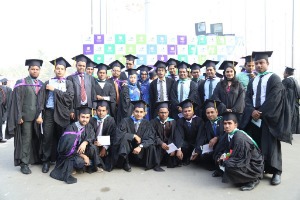Higher education in Bangladesh has seen significant improvements in recent years, with a greater emphasis placed on the development of the sector. According to the UNESCO Institute for Statistics, Bangladesh's Gross Enrollment Ratio (GER) in tertiary education was 16.6% in 2019, up from just 7.3% in 2009. This is an impressive increase, indicating that more young people in Bangladesh are gaining access to higher education opportunities.
Opportunities for Higher Education in Bangladesh
Bangladesh has a number of reputable universities, both public and private, that offer a range of degree programs across various disciplines. The country has a total of 46 public universities, as well as over 100 private universities and colleges. Some of the top public universities in Bangladesh include the University of Dhaka, the Bangladesh University of Engineering and Technology, and the University of Rajshahi.
In addition to these universities, there are also a number of specialized institutions that provide technical and vocational education, such as the Bangladesh Institute of Science and Technology (BIST), the Bangladesh Institute of Management (BIM), and the Bangladesh Institute of Administration and Management (BIAM).
Challenges of Studying in Universities in Bangladesh
Despite the progress made in the education sector, there are still some challenges faced by students studying in universities in Bangladesh. One of the biggest challenges is the quality of education. While there are some excellent universities in the country, many students report that the quality of teaching is poor in some institutions. This can be attributed to a lack of qualified teachers, inadequate resources, and outdated teaching methods.
Another challenge is the high level of competition for places in the top universities. This can make it difficult for students to gain admission to their desired institution, especially if they come from a disadvantaged background.
Furthermore, the cost of higher education can be a barrier for many students, as tuition fees can be quite high, especially in private universities. This can limit the opportunities available to students from low-income families, who may struggle to afford the fees.
Conclusion
Overall, higher education in Bangladesh has made significant progress in recent years, with more young people gaining access to opportunities. While there are still challenges that need to be addressed, such as the quality of education and the cost of tuition, the government is committed to developing the sector and ensuring that students have access to high-quality education. With continued investment in the education system and a focus on improving the quality of teaching and resources available to students, Bangladesh has the potential to become a leader in the region for higher education.
Photo Credit: Bangladesh University

